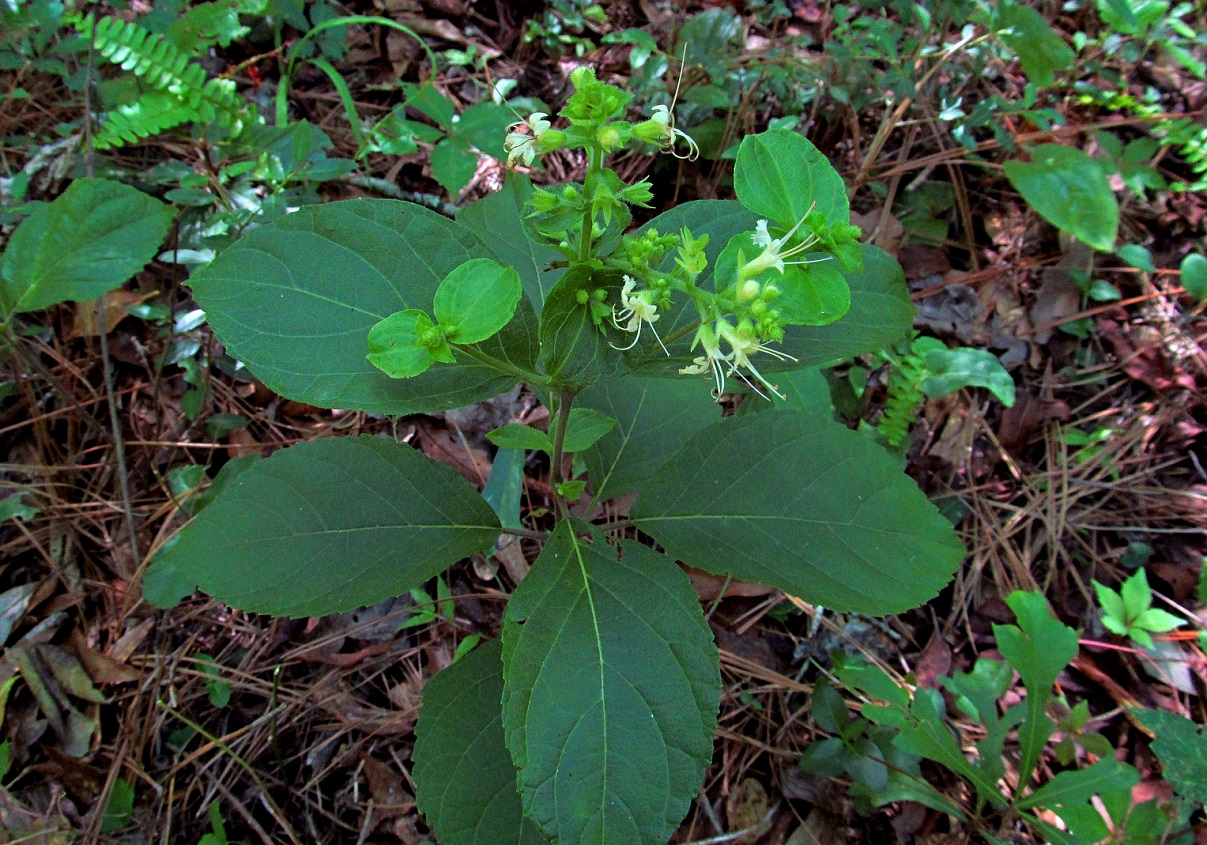Difference between revisions of "Collinsonia anisata"
(→Distribution) |
|||
| Line 25: | Line 25: | ||
<!-- Basic life history facts such as annual/perrenial, monoecious/dioecious, root morphology, seed type, etc. --> | <!-- Basic life history facts such as annual/perrenial, monoecious/dioecious, root morphology, seed type, etc. --> | ||
==Distribution== | ==Distribution== | ||
| + | This species occurs from central Georgia, southwest to the Florida panhandle, and westward to southern Mississippi.<ref name="Weakley 2015"/> | ||
| + | |||
==Ecology== | ==Ecology== | ||
===Habitat=== <!--Natural communities, human disturbed habitats, topography, hydrology, soils, light, fire regime requirements for removal of competition, etc.--> | ===Habitat=== <!--Natural communities, human disturbed habitats, topography, hydrology, soils, light, fire regime requirements for removal of competition, etc.--> | ||
Revision as of 13:14, 14 February 2018
| Collinsonia anisata | |
|---|---|

| |
| Photo by the Altas of Alabama Plants Database | |
| Scientific classification | |
| Kingdom: | Plantae |
| Division: | Magnoliophyta - Flowering plants |
| Class: | Magnoliopsida - Dicots |
| Order: | Lamiales |
| Family: | Lamiaceae |
| Genus: | Collinsonia |
| Species: | C. anista |
| Binomial name | |
| Collinsonia anisata Walter | |

| |
| Natural range of Collinsonia anisata from Weakly [1] | |
Common Names: southern horsebalm; anise horsebalm[2]
Contents
Taxonomic Notes
Synonyms: C. canadensis var. punctata; C. punctata[2]
Description
Distribution
This species occurs from central Georgia, southwest to the Florida panhandle, and westward to southern Mississippi.[2]
Ecology
Habitat
C. anisata is found in rich forests.[2]
Phenology
In the southeastern and mid-Atlantic United States, C. anisata flowers from late July through September and fruits from September through October.[2]
Conservation and Management
Cultivation and restoration
Photo Gallery
References and notes
- ↑ Weakley, Alan S. 2015. Flora of the Southern and Mid-Atlantic States: Working Draft of 21 May 2015. University of North Carolina, Chapel Hill, North Carolina. 1320 pp.
- ↑ 2.0 2.1 2.2 2.3 2.4 Weakley AS (2015) Flora of the Southern and Mid-Atlantic States. Chapel Hill, NC: University of North Carolina Herbarium.